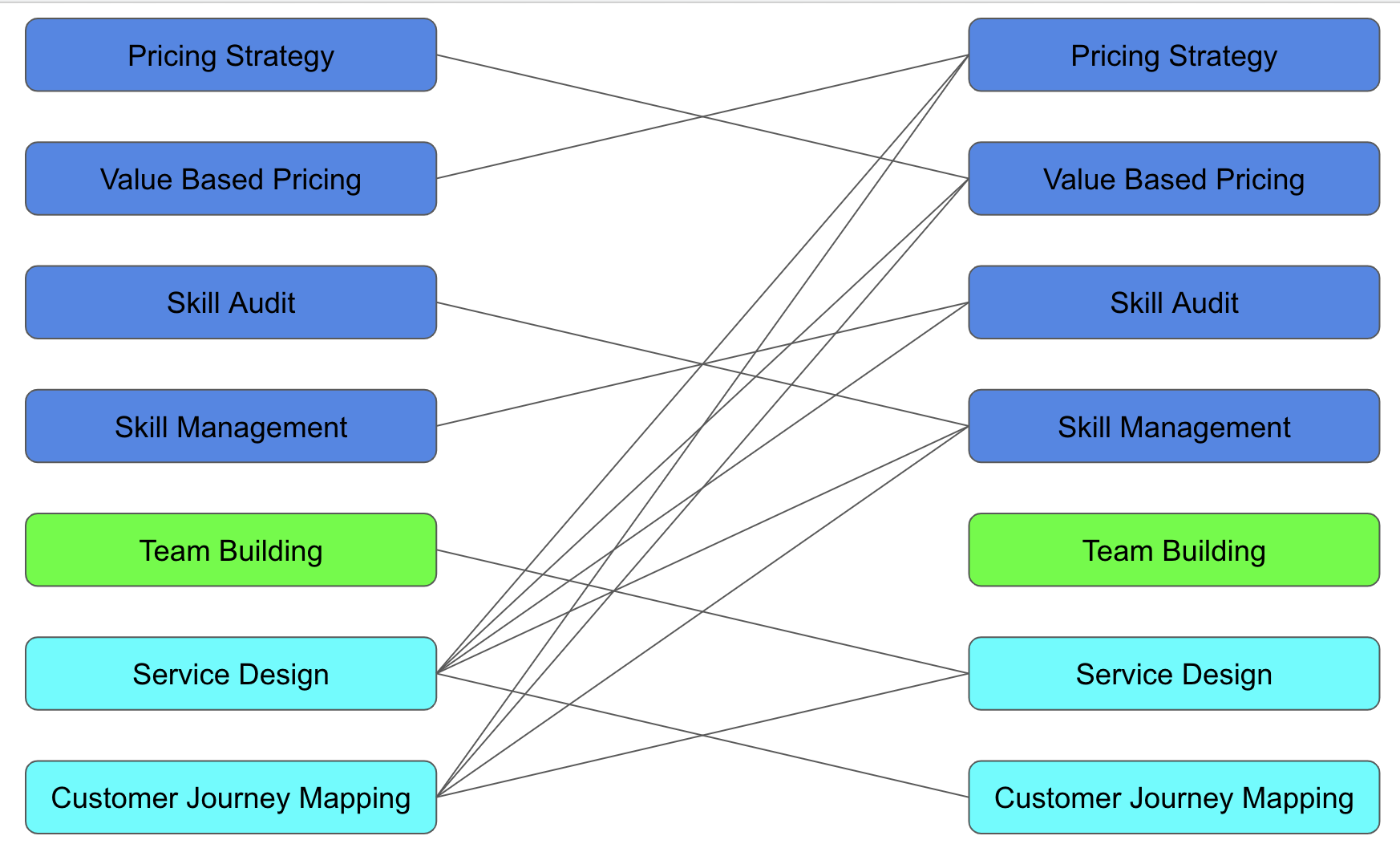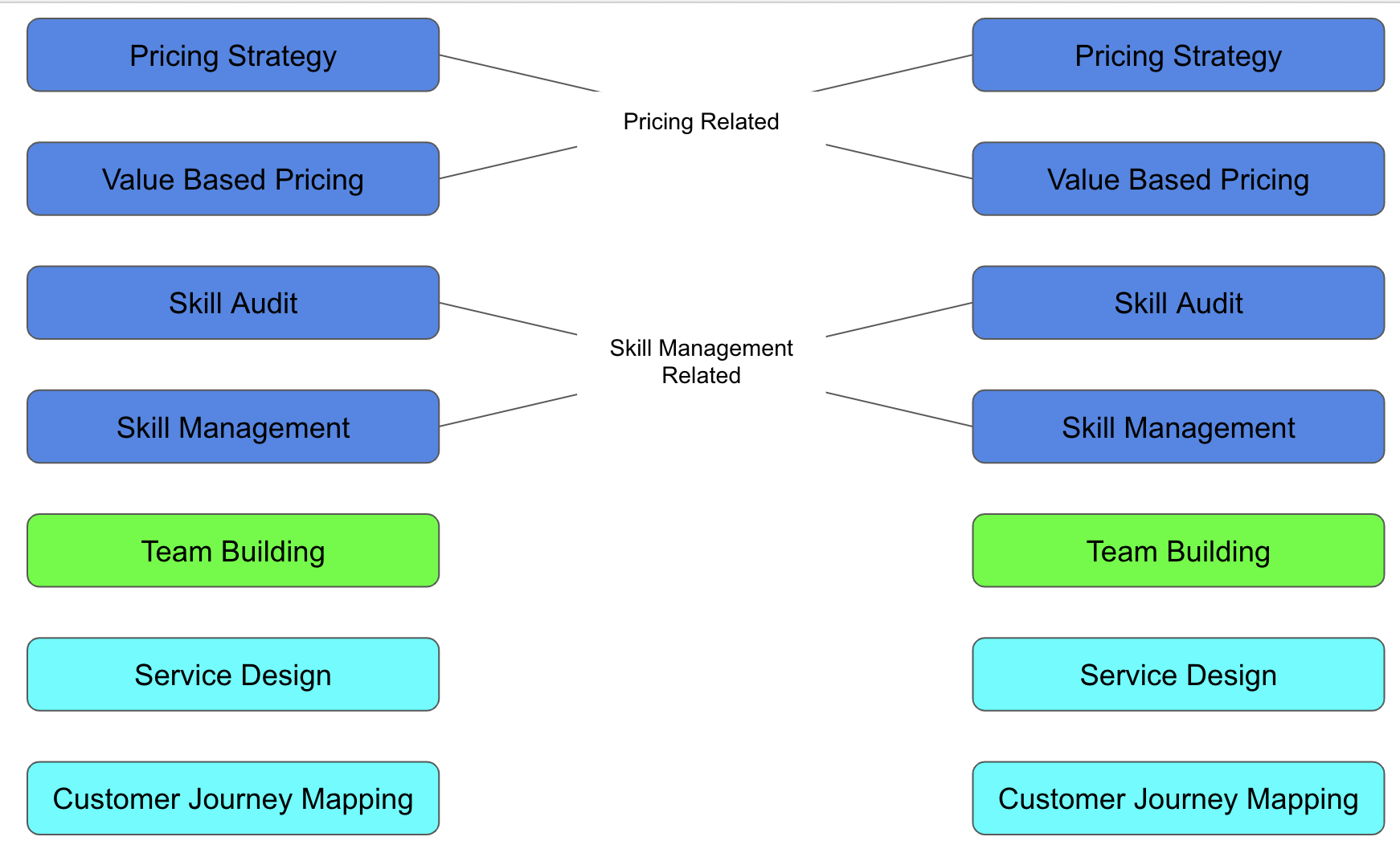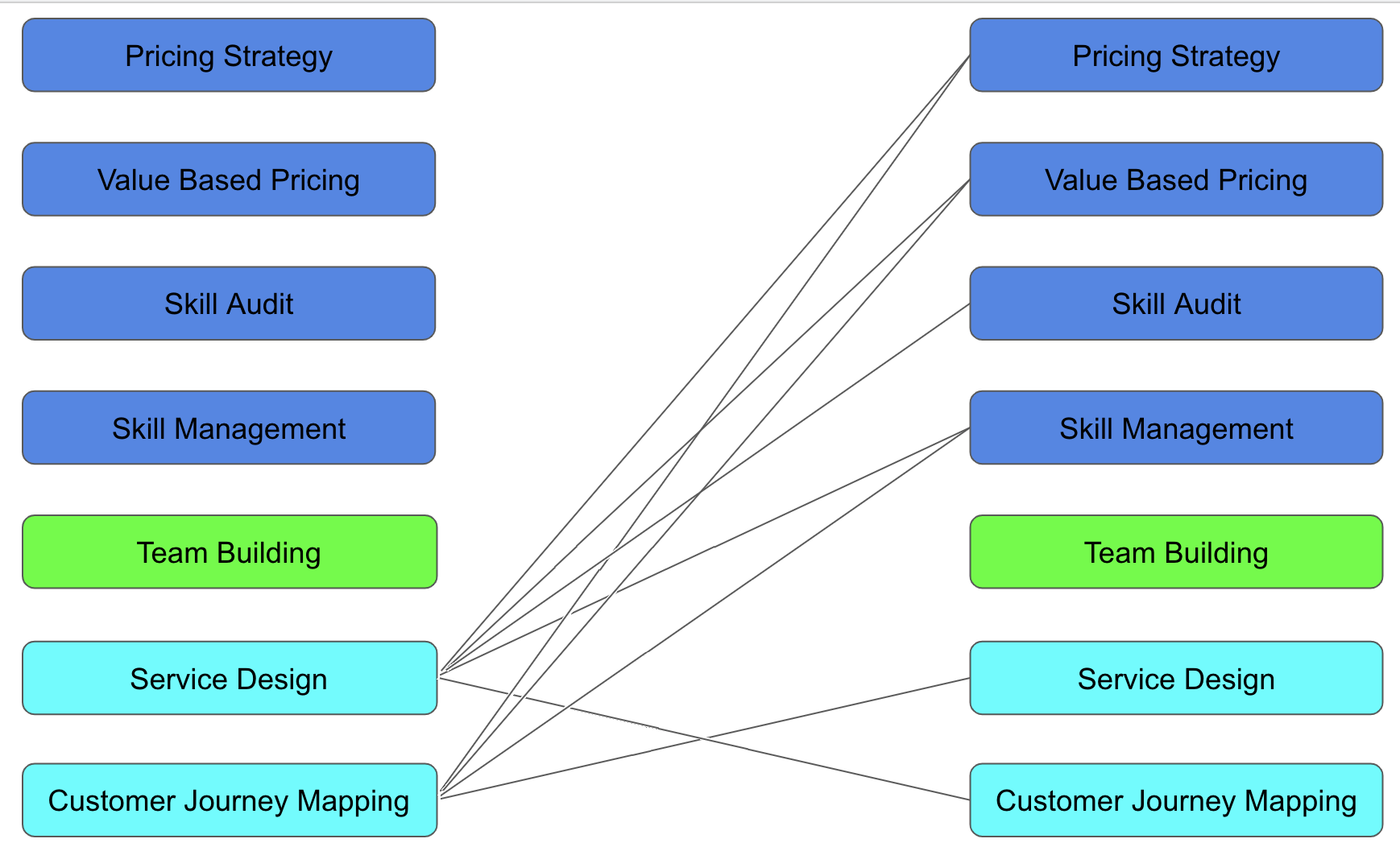Try connecting your own skills
Steven Forth is co-founder and managing partner at Ibbaka. See his skill profile here.
The skill graph has emerged as the core underlying technology for skill and competency management. It is an open format that supports Linked Open Data and the growth and evolution of skills and their connections at the individual, team, organization and community levels.
Deloitte has a good article on why the skill graph is so important The “skills graph” will spark a reimagined approach to workforce planning and Josh Bersin has als been promoting this approach.
A simple definition of a skill graph is given below.
Skill Graph Definition: A type of concept map that connects skills to other skills, to people, to jobs, roles, tasks and activities, and to goals and outcomes. The skills and other concepts are the nodes (vertices) in the graph and the different types of connections are the edges. A skill graph is open so that new nodes (skills etc.) and edges can be added.
Sometimes, the skill graph is seen as a normalizing structure, something that can be used to impose order on the often chaotic world of work and that can provide guidance and set expectations. A competency framework or model is an example of this sort of normative approach. In a competency model a group of experts has come together to define the skills and competencies needed to perform some type of work.
This is one way to approach the skill graph, but it is not the only way.
Another way to approach the skill graph is as an expression of an individual’s unique capabilities. Each of us has a unique collection of skills, that we have connected in different ways and that we use in the roles we play in our organizations, families and communities. We also have our own way of connecting our skills to our goals and aspirations.
The individual skill graph is unique in three ways …
The skills included
The connections
The applications
The individual skill graph is as unique as our fingerprint, or our DNA. Like DNA, it does not determine what we do, but it directs what we are able to do.
Explore the connections between your skills
One way to reflect on one’s work is to play with connecting your skills. There are several ways to do this. Here we will explore two fairly formal examples, in another post we will look at a more open approach.
Let’s begin with a set of core skills. On the Ibbaka platform, core skills are the skills most important to your work. They can be self selected, or come into your skill profile through Must Have skills for roles that you play.
Here are seven of the core skills from my skill profile.
These are color coded using the Ibbaka Skill Category system (this is our default approach, the platform can support custom systems as well).
The first step in connecting these skills is to simply draw a line connecting skills I use together.
Next is to focus in on skill clusters and label the connections to get a better understanding.
I see four clusters I want to focus in on. Two are business clusters, one around Pricing (Pricing Strategy and Value-Based Pricing), the other around Skill Management.
There are also foundational skills that I apply to these two business clusters, Service Design and its supporting tool of Customer Journey Mapping.
If I were to expand these, I would find many associated, connecting and complementary skills that I use together. These are central skills in large, densely connected, skill networks. I could also add in people, so that I could answer questions about who I use these skills with. Another layer to the skill graph is the roles and teams where I have used these skills. An expanded approach to connecting skills will be covered in a future post.
Using Design Structure Matrices (DSM) to understand skill connections
Sometimes one needs a more formal approach to connecting skills. One of the best ways to do this is the Design Structure Matrix or DSM approach. You can learn more about DSMs at the DSM website. I have written about DSMs and graphs in the context of skills here.
Note that the DSM makes it easy to see the clusters where there are a lot of interconnections and dependencies. This is one of the great strengths of the DSM approach.
One can think of the DSM as an alternative presentation of the skill graph that calls out interactions and dependencies.
In this post we looked at connecting just seven skills that were already well established and understood, This already provided some insights, showing the key role that Service Design plays in integrating work in pricing and skill management.
In our next post on skill graphs we will take a different approach, one where we show how the individual skill graph grows organically and how it connects not just skills to skills, but skills, people and work.
Ibbaka posts on competency models and competency frameworks
Try connecting your own skills (this post)
From user experience to competency model design - Margherita Bacigalupo and EntreComp
Competency framework designers on competency framework design: The chunkers and the slice and dicers
Competency framework designers on competency framework design: Victoria Pazukha
Design research - How do people approach the design of skill and competency models?
The Skills for Career Mobility - Interview with Dennis Green
Lessons Learned Launching and Scaling Capability Management Programs
Talent Transformation - A Conversation with Eric Shepherd, Martin Belton and Steven Forth
Individual - Team - Organizational use cases for skill and competency management
Co-creation of Competency Models for Customer Success and Pricing Excellence
Competencies for Adaptation to Climate Change – An Interview with Dr. Robin Cox
Architecting the Competencies for Adaptation to Climate Change Open Competency Model
Integrating Skills and Competencies in the Talent Management Ecosystem
Organizational values and competency models – survey results








